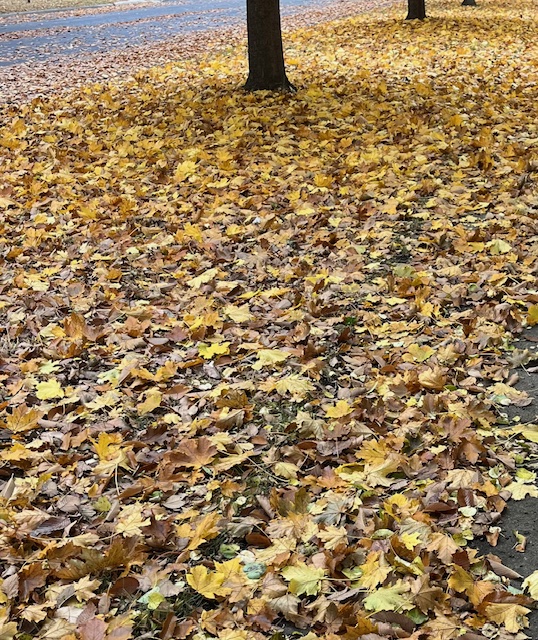Talking Plants
Jillian Patrie | University of Minnesota Yard and Garden Extension
Leaves have finished falling from trees in the area and bags are lining the street curbs for composting. If you have already collected leaves or are yet to start, here are a few reasons why using leaves as mulch is good for your lawn and landscapes.
Mulching leaves can be an easy way of avoiding the task of fall clean up and adding nutrients back into lawns and landscapes. Nutrients like nitrogen, potassium and phosphorus are returned to the soil from grass clippings and leaves. Decomposing leaves can also improve soil structure through added organic matter. This can improve water and air movement, allowing better root growth for plants. Bagging leaves may be necessary when leaf litter is heavy and less than 50% of lawn surfaces are visible. An excess of fallen leaves that have been left un-mulched can promote snow mold and other lawn issues. For more information on benefits of mulching grass and leaves for lawn health visit https://extension.umn.edu/yard-and-garden-news/fall-leaf-mulching-good-your-lawn.
Fallen leaves are commonly used in compost piles as organic matter that microbes break down into usable soil amendments. Mulching leaves into smaller pieces will allow microbes to break them down quicker and reduce the slimy mat that we see in spring. If you are looking to start a compost pile or add to an existing one, here are a few pointers on preparation. Build your compost pile in layers, beginning with 8-10” of leaves, grass or plant trimmings. Water until moist, add a nitrogen source (manure or fertilizer). Add 1” of soil or compost (this will add in microbes) and continue this layer process until the pile is around 5’ in height (water each time you add a new layer). Compost piles need to be maintained, which includes monitoring heat and turning the pile. For more information on composting and structures visit https://extension.umn.edu/managing-soil-and-nutrients/composting-home-gardens.
Leaf litter can be used as a mulch in landscapes for weed suppression and insect habitat. It is important to avoid using leaf litter that has been infected with insect or disease pests. If plant material in your yard has experienced issues with fungi, viruses, or insects these should not be used as mulch. This plant material should be removed from your yard, destroyed or composted properly. Leaving leaves or other plant material until spring can provide important overwintering and reproductive habitat for insects. Many bees lay eggs in hollow plant stems, a large number of butterflies and moths use leaf litter for winter protection of eggs, caterpillars or adults.
If you intend to use fallen leaves for landscape mulch or insect habitat, it is best to move them by raking or using a leaf blower, as mulching can harm insects that have already taken refuge. If you want to remove leaves from garden spaces, wait until late spring, to allow butterflies, queen bumblebees and others to emerge. For more information on habitat benefits that fallen leaves or plant material provide visit xerces.org.
For more information on this article or local assistance please contact Clay County Extension Educator Jill Patrie at 218-299-7338 or by email at patri350@umn.edu.


